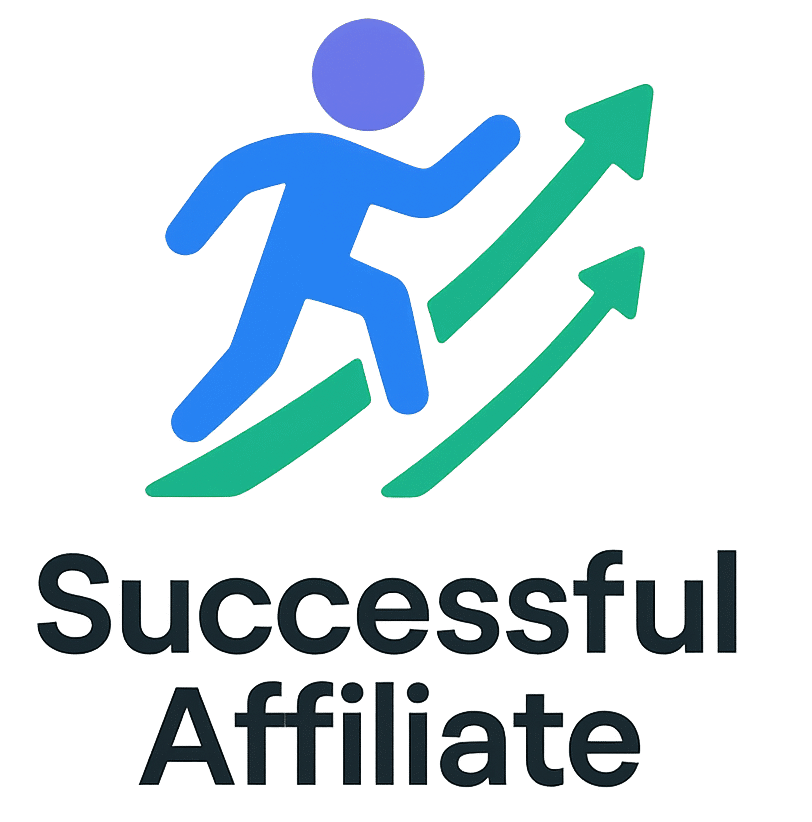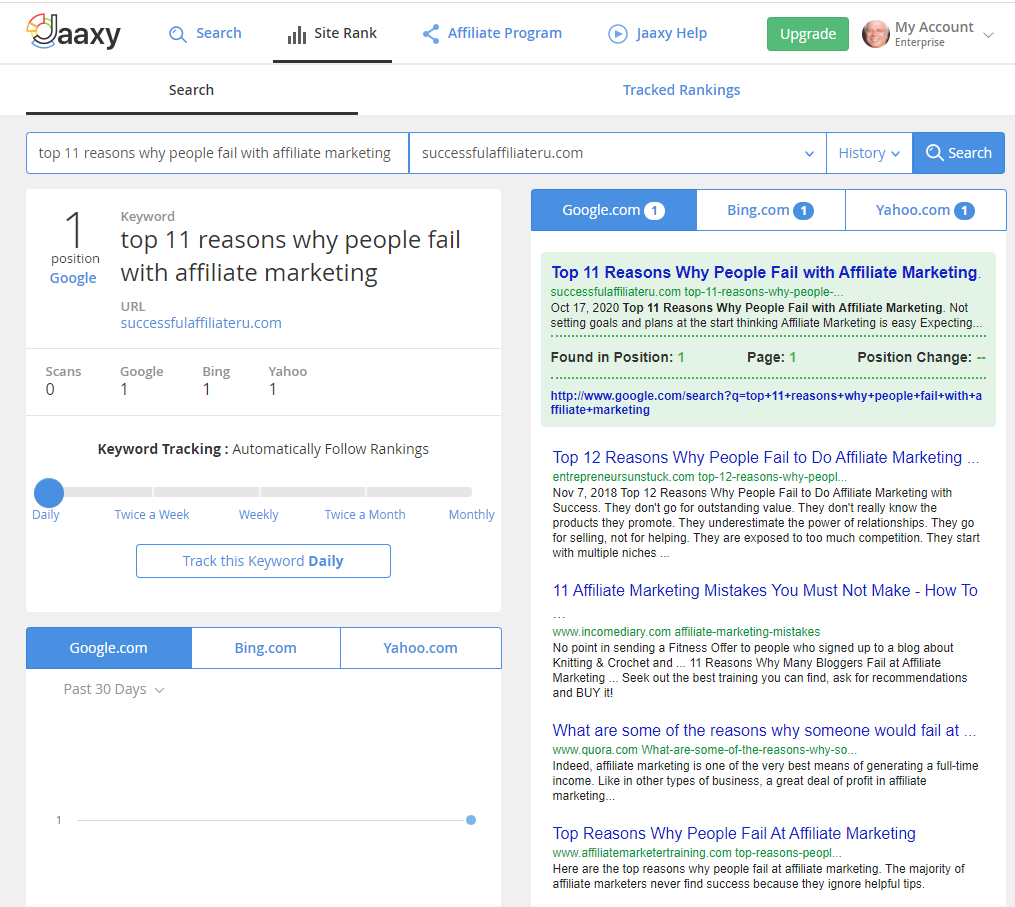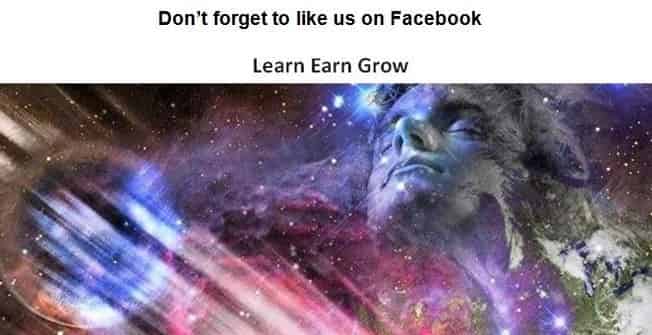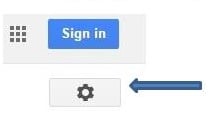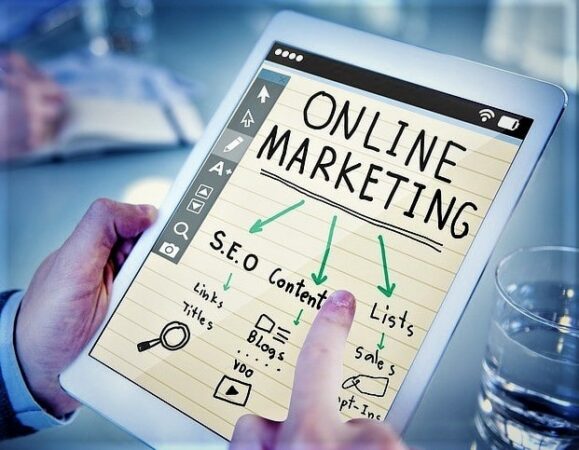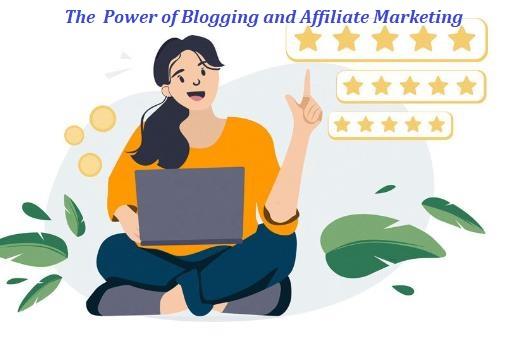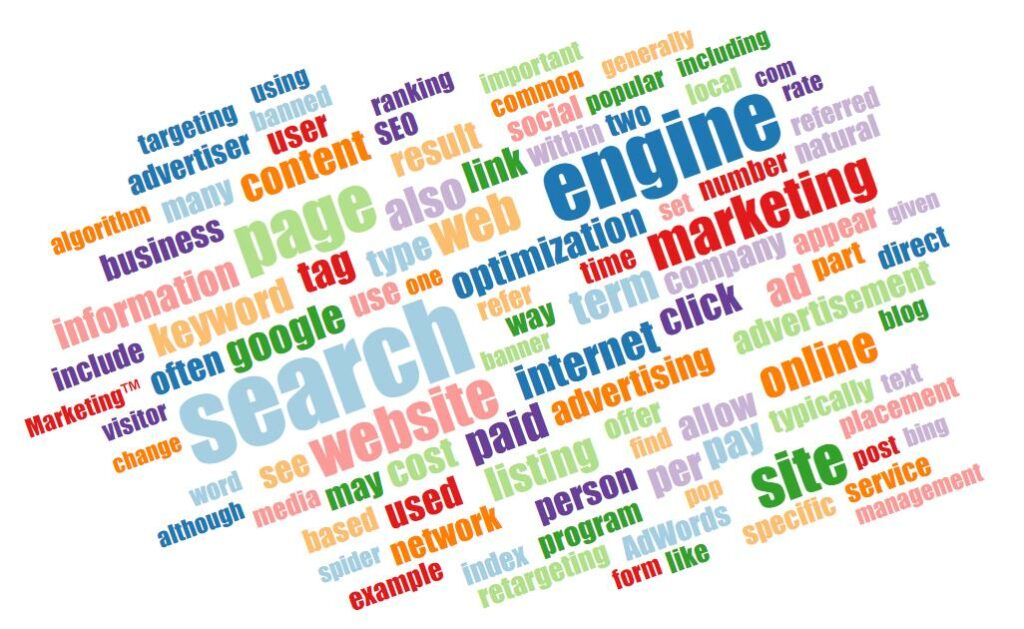The Checklist is Your SEO Starter Guide to Understanding Search Engine Optimization and Help You Gain a Higher Ranking With Google
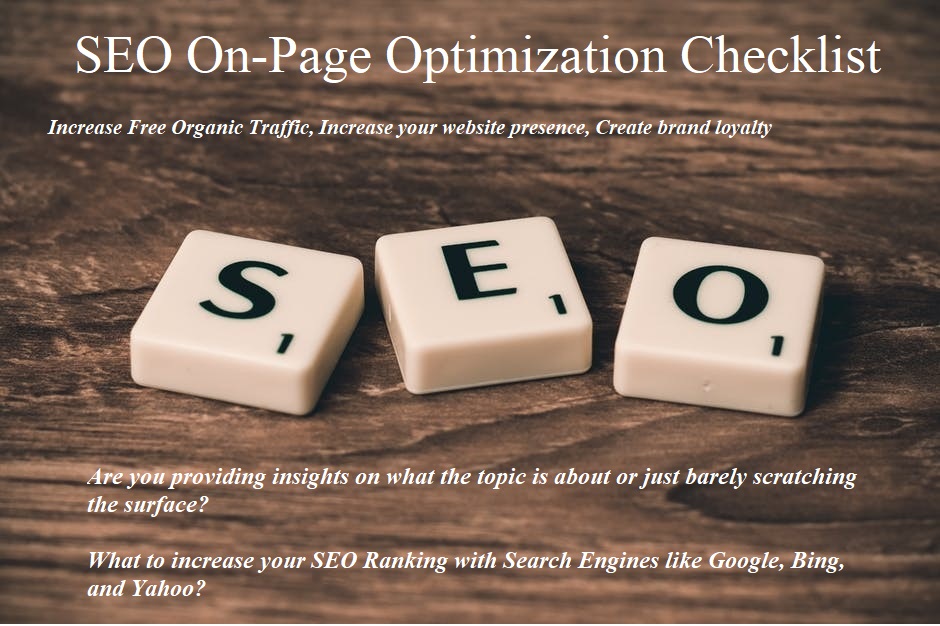
SEO stands for Search Engine Optimization.
The methods used within this checklist will assist search engines such as Google, Bing, and Yahoo to index and ultimately rank your website content.
Once indexed, there are other techniques you will use to maintain your online presence as you build a solid foundation for your website.
Those that know and use SEO effectively will find themselves at the top of the search engine pages of which Page 1 is the aim.
Regardless, if you have a new website or an established one, that doesn’t mean you can’t outrank your competition.
Why is SEO so important on a website, and why should I care about On-Page Optimization.
By applying what is available to you here, together with your consistent work; you can easily rank at the top and be the competition others are chasing.
Here are the Top 4 reasons why you should care about On-Page Optimization
Increase Free Organic Traffic.
Your website will get free organic traffic from those looking for what you have to offer by having a high ranking within the search engines.
Boost and Increase your website presence.
Using the proper SEO techniques creates a more user-friendly website, bringing established trust between your website and your visitors.
Create brand loyalty
Consistency with SEO practices will increase the user experience between your website and your customers.
Gain the advantage over competitive websites
One of the main reasons some fair better than others is the proper use of SEO techniques, so why not take advantage, become the competition others seek to be.
Please note the following:
Whether you are creating a website for the first time or already have an established site, one of the first and foremost things on your To-Do list is creating an account with Google Google Search Console) and also with Bing Webmaster Tools.
You will find each link above, and both are free to join.
There are many reasons for this, but the main one, for now, is to establish a connection with both search engine tools that will help you further use your analytics.
Although these are not On-Page methods, it is more Off-Page which I will discuss in a later article.
It will help you later as we go through some of the On-Page techniques, such as indexing your website even before creating any content.
Three vital reasons why you should connect with Google Search Console and Bing Webmaster Tools.
Although there are many individual reasons for each (which will be discussed in a later article) there are three primary reasons why and how it will benefit your website.
Indexing
Allows for your website via Site Map along with individual posts and pages to get indexed within the search engines.
Think of it this way, if the search engines don’t know you exist, how can they index you?
If you are not indexed, then how can your customers find you on the web?
Health Analysis
Both Search Tools help analyze information regarding your Website’s health status.
Analysis of important information regarding your posts and any errors that may be of concern.
Optimization of Website
Let’s you know how your website is optimized not just on your desktop but also how it looks on smaller devices such as your laptop and mobile phones.
Should there be any issues, the Search Engines tools come in handy to let you know if they are not optimized correctly that that particular device especially mobiles.
Any adjustments can be made via the backend within your website where you can also find how each device sees your website such as desktop, laptop, or mobile device.
Added Pro Tips
Once you have connected the two, you will find that as an added benefit you can Connect Google Analytics with your Google Search Console.
With Bing Webmaster Tools you can also connect your Microsoft Clarity which is an added bonus to your search function.
Here you can use the heatmap which shows you how your visitor views your site, where they stop, and what they may click.
This gives you added options to see how long a visitor stays on your page, along with where and when they leave your article.
If too early this is where you can see what can be improved for a better user experience.
Google Analytics to that as well When you do, you’ll see helpful SEO information from inside of your Google Analytics account.
SEO On-Page Optimization Checklist
Below, you will find the basic steps to take that are important for your SEO optimization.
Two are Off-Page tools, one of which I mentioned already with the Google Search Console and Bing Webmaster tools.
The second tool is a plugin that will help your image optimization further down.
These, I feel, are the first and foremost aspects to take before the On-Page SEO begins.
Now that you have selected your Niche and created your website.
Your next step is to connect the two Webmaster tools, Google and Bind (as stated above).
Now we get to the Important SEO fundamentals to give your content and website overall value for the benefit of your readers along with increasing the opportunity to rank high within the search engines.
The SEO On-Page Checklist
It is time to prepare the content that you will be writing about for your readers’ benefit.
But before you begin writing your content, there are two areas that are crucial to any content you wish to create.
Research and Keywords
Research
This is where your main time will be spent before you begin writing your article along with doing some keyword research mentioned next.
Notice I mentioned research but also Keyword research.
Although they may seem the same, Keyword research is a separate function that is added after your initial research on the topic you are writing about.
The first step to research is knowing what you will be writing about.
This will be based on your selected niche which is for a certain group of people searching for that something specific to their needs that can offer solutions, ideas, and thoughts that will help them.
Types of Research
1) The first type is to know what you will be writing about that is specifically related to your niche. don’t go thinking of writing everything under the sun that your niche will be about.
2) The second one relates to doing extensive research not just on your topics but also with your competitors in the same niche and topic you are writing about. The best place to check out your competitors is on page one of Google.
Find out what they are doing to get to the top 3 spots and work out what you can do better to gain a better result than them.
Keywords
First, what is a keyword? Why using the right keyword can determine your ranking position with the search engines in order to be found on the first page of Google or Bing even Yahoo.
What is a Keyword?
A keyword can be a single word, a phrase, or a query that users type on the search box of search engines or other websites.
Two main reasons for the proper use of keywords.
- It helps the search engines understand your keyword and how relevant it is to your content.
- The proper use of keywords helps match what your audience is seeking online. As a result, they will be more inclined to visit your website and when you are helping them make that informative decision they are more likely to buy from you via the affiliate link you provide.
A major Factor with On-Page SEO is keyword research.
Here is an example of what proper keyword research can bring you, using Jaaxy Enterprise, along with all the correct On-Page SEO optimization can give.
In a post of mine, I am giving the Top 11 Reasons Why People Fail With Affiliate Marketing.
As you can see, this post is now on Page 1 position 1 in Google but also in Bing and Yahoo.
That is what Proper Keyword research can do for you, along with using the correct SEO techniques I will give you.
Also, bear in mind that as you write naturally for your readers you can also rank for thousands of other keywords, some you may not have even targeted.
Google and Bing know what’s best for the readers and being unique with your content along with using the SEO optimization mentioned below will get you there.
Remember one thing always focus on your reader’s intent as you are helping not selling.
This alone shows the power of using a great Keyword Research tool like Jaaxy, which gave the results needed to rank in the best position with the search engines.
Long-Tail Keywords
You may struggle to rank keywords, and some keywords will rank you higher.
Long Tail Keywords will give you the best opportunity to rank at the top, along with the great content you have created for the best user experience.
As stated further up, keywords can be a single word, a phrase, or in the form of a question or query.
Long-tail keywords can be three or more words together with a max of 5 at best.
You need to consider the amount of space you have for your Meta Title and Meta Description (discussed later).
Also, remember the length of each word used as well don’t overdo it.
Note:
When using long-tail keywords, they need to make human sense, and your main aim is to write for the benefit of your readers, not for the search engines.
Using the image above, I could have easily created a keyword saying “Fail With Affiliate Marketing“.
Now this keyword doesn’t totally make sense for its purpose however as your site grows with authority you can rank for many terms you didn’t plan on.
Still, to be more specific to a particular audience, the best result that Jaaxy gave me was Top 11 Reasons Why People Fail with Affiliate Marketing.
As you can see, the results came true and appeared on page one of all three search engines.
Content
So you have now researched your keywords, it is time to add them to your content using your On-Page SEO techniques (more of which will be covered further below).
What makes great content?
Great content is about giving the best user experience for the visitors coming to your site.
Your content needs to be unique but written for your visitors and not entirely for search engines.
Length of Content
The average length of your content would be around 1500 – 2500 words.
However, it is not as much the content’s length but what you write for your reader’s intent that matters most.
An informative post can rank page 1 of the search engines with 750 words, yet a 3000-word content may not rank at all.
It is all about what is inside the content along with the value you write about for your readers.
Are you providing insights on what the topic is about or just barely scratching the surface?
There is no doubt that many are creating longer content than ever before.
As long as it is informative, and adds value for the reader it will continue this way and that is how Google and other Search Engines want it to be.
Many templates can show you how to structure your content, but usually, it contains the Title and around Four or Five parts within the range itself.
Title Header
So within the Title Header, you will have your selected long-tail keyword related to what you are about to write.
1) Introduction
We have stated that you need to create unique content for the benefit of your readers.
The introduction will be the first impression your reader has of what you offer in your article.
If it is not captivating, they will go elsewhere.
One of the On-Page SEO techniques is to have your keyword in the first part of your introduction and it must make sense.
2) Main Body
Write the rest of your content naturally that is relevant to the topic.
Don’t stuff your content with keywords.
You will be surprised by how many keywords will be found by the search engines just by writing naturally. Within the main body, you will have sub-headings to break up the content and one that add relevance to your topic.
Use your main keyword within one of the sub-heading for added SEO juice and once possibly toward the end.
Make sure you don’t overdo it as it will be considered keyword stuffing which was an old practice now frowned upon by the search engines.
Just write naturally and keep it simple and to the point.
This is where other parts of your keyword research come in handy as you find relevant keywords that you can use within the sub-headings.
3) Conclusion and CTA (call to action)
Both parts of the last section can be either be separate or included together depending on what you have to offer to your readers.
The conclusion is a summary of what you have written; you may ask for comments relating to your article, ask for your reader’s views, and perhaps questions or comments on the post itself.
Creating a comment section is also an SEO technique that can add some additional value to your rankings.
With the CTA, you would add either a hyperlink in a text or image (more on this further down) that is clickable to take the visitor to purchase the product or service to the affiliate company or merchant.
Now you have completed writing your articles; there are some additional steps to do before publishing your content.
We have already discussed the Title and the introduction; now, we need to do some SEO.
4) Meta Title, Meta Description
Your Heading Title in the back end of SEO is also known as the Meta Title, while the introduction is known as the Meta Description.
Here there are a few things to do with both.
The Meta Title will contain your keyword relating to your content.
The Meta description will include your introduction to your article this is normally the first paragraph you will see when searching on the web which is under the title.
Nothing changes about that; the only aspect as per SEO is the length used in both.
The Meta Title has about 60 characters; if it is longer than that, it will be cut off in your snippets when viewing this with the search engines.
Therefore, for best results, try to keep it to around 55 characters instead.
The Meta Description, which contains your keyword (preferably a Long-Tailed Keyword), allows up to 160 characters.
Anything longer than that won’t be seen when someone views your description on the search engines.
The image below shows you the back end of what the Meta Title and Meta Description would look like, along with what your snippet would look like when seen by your audience on the search engines.
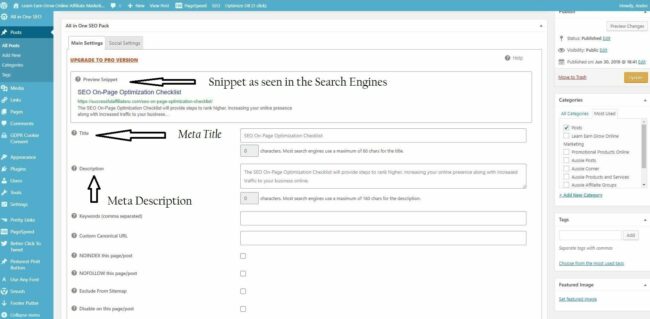
5) Body Tags (H1, H2, H3, H4, H5, H6)
HTML — This stands for Hypertext Markup Language.
HTML is a common language used when creating web pages.
The H tags are HTML tags that indicate a heading on a website and how it is displayed.
There are six heading tags, ranging from H1 through to H6.
H1 tags are the most important, while H6 is the least important.
When creating content, you will have various headers to help stand out from your content.
Your post title will use an H1 tag and should be the only H1 tag used. You can use the other H tags as much as you wish.
The introduction to your content will be an H2, while the rest of the headers, such as subheadings, can be H3 if need be H4, but there is rarely a need in using H5 or H6 tags.
Here is a sample of what the H tags would look like using Times New Roman as the font and size is 14
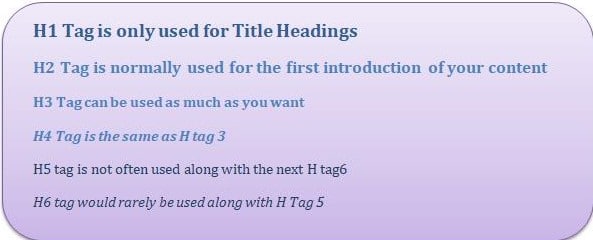
6) Internal Links
Internal Links are also HTML codes that, when clicked, take you from one part of a website post to another post within the same website.
When clicked, this will take you straight to that blog post without the need to search for it on the website manually.
For example, when you click a highlighted link, it will take you to one of my recent posts regarding Affiliate Marketing For The Beginners (How To Get Started Now)
Most links would typically show up as highlighted and underlined, but you can also change these features as well, but for now, the example is shown below for this purpose.
Internal Links are powerful On-Page SEO techniques for the following reasons;
• They help users and search engines navigate through the content of your website.
• These SEO techniques will benefit your articles on your site.
• Internal linking gives added priority to newly created content.
7) Image Optimization
We already understand how important having good quality content is.
Another factor with quality content is the addition of images that is relevant to the content you have.
We also know that a picture can paint a thousand words, as the saying goes.
Images come in different file types, such as Jpg, Jpeg, Gif, and Png. Jpg is generally the best file type to use within your website.
However, Image size is an SEO ranking factor as well as page speed.
Too large a size can impact your loading speed, slowing down your website when being loaded. As a result of a slow loading site, search engines will take longer to crawl your website, and if it takes too long, your ranking will drop.
Generally, a site should load up within 2 seconds or better; any longer than that, you could be losing money and time.
Another critical factor is the user experience. Any longer than 2 seconds, they will leave and go to another site.
So how can you optimize your image?
One method is to add a plugin that can optimize your images as you add them to your media library within the website.
I would highly recommend a couple of plugins that can help optimize your images within your site.
They are Smush and EWWW Image Optimizer.
These are both Free plugins available via your WordPress.Org website, and there is no great need to pay for their premium version as the work they do is fantastic as is.
Both will help to optimize the images and speed up your site.
8) Alternative Text and Image Title Attribute
Here is where your On-Page SEO comes into action for your images (refer to the image below).
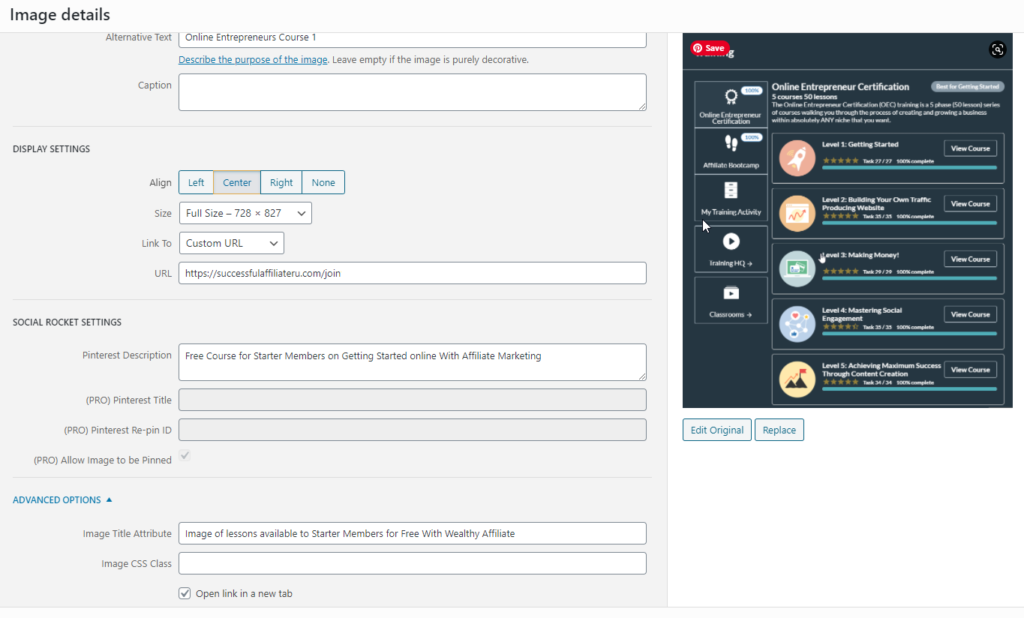
When you first download an image to your WordPress Media Library, you will have some options to add the details in your Alt Text, Title, Captions, and Descriptions as shown above.
All options have some link juice with SEO, but not all are necessary. It all depends on what the purpose is and is author dependent.
First note, Search Engines such as Google cannot read an image to understand what it is about from just the Picture alone. Here you would describe what the image is about and if they are related to your content. Google will realize this and work on its ranking value
When doing this method will enable us to assist in three ways.
1) To enable Search engines to understand what the image is about and its relation to the content.
2) Adding a description in the right section creates a better user experience and will help them stay longer on your site.
(Staying longer is also a ranking metric for search engine use. That is for your added information).
3) Increasing your ranking with SEO On-Page Techniques is applied to give you a higher chance of being on the search engines’ top page.
Ok, let’s look at these options from top to bottom;
9) Alt Text
The alt text allows search engines to understand the image’s description so it can be indexed accurately.
If the image can’t load for some technical reason, the alt text will still provide the information.
Here you would add your main keyword to gain some SEO juice for your images.
Title Tag
The Title Tag lets search engines know there may be something of importance to the image.
Search Engines will then crawl your image, read any other context provided, and as a result, can lead to higher-quality traffic to your site.
Although it may not have as much SEO Ranking power as some others may think, a Title name is needed to be related to the content.
WordPress also uses it to allocate a name to the images within its Media Libray.
You wouldn’t put Image 1 as a title as it has no sense nor offers any value to your content.
If you did, it would give some warning bells to the search engines to state something is not right with this image and, if so, may feel it is a possible clickbait title that won’t bode well for your content and its ranking.
10) Captions
Captions are an optional choice. Although they can help with image optimization, it is not always necessary to use them as other areas, such as the title attribute, can cover the image’s purposes. So there is no need to state it twice.
11) Readability
We already know the importance of creating great content that provides information to your users.
Part of writing great content is readability, which includes various sections with the layout of your content.
Such as headings, sub-headings, H Tags, and image placement, most of which have been mentioned above with the relevant information on the topic at hand.
However, despite all that you do to make it look relevant and create an easy layout for the users’ experience, one aspect I have noticed with many websites, and not just from newbies.
Even some well-known websites tend to skip this at times.
A major Ranking factor with Search engines is low-quality content, including poor spelling and grammar.
No one wants to read large blocks of text with poor spelling added to the mix.
Instead, create some white space by breaking the text into smaller paragraphs with headings and sub-headings and using the H tags as mentioned above in the appropriate places.
Add proper images relating to your article’s context, minimize the use of added ads such as AdWords.
If you have a pop up ensure it doesn’t come every few minutes; if you are like me, I want to read the article, not keep clicking away from another pop-up that keeps appearing.
These simple aspects can either make or break your article and determine your ranking page factor with the search engines.
Your content is about creating a great user experience and writing for the reader in mind and not focusing on search engines.
If you apply what is shown above with the SEO On-Page Optimization Checklist, you are on your way to ranking higher with the search engines.
12) Publish your content
So the process of creating your content is nearly complete before you hit the publish button, go over your content, and ensure you have applied all the Optimizations from the checklist above.
Once you know you have done all, you can hit the publish button.
Conclusion
The SEO On-Page Optimization Checklist is only a part of what and how you can improve your site and the content you have created.
Just applying the above alone can help your website rank higher.
Please provide a comment below. I would love to hear your thoughts and views on the above.
If you want to learn how to earn online and create a solid foundation for your website, you will find this training platform of great benefit to you.
So if you are interested and want to learn how to earn online (Your opportunity starts here).
Wishing you much success in all you do in life.
